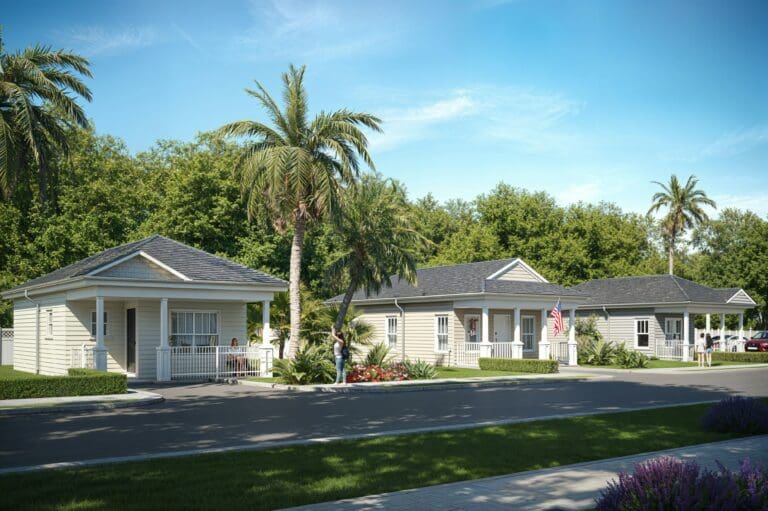Tiny homes are emerging as popular alternatives to conventional housing across the country as individuals and families look for more affordable, practical, and flexible living options. In Broward and Palm Beach County, FL, many homeowners find that tiny homes and accessory dwelling units (ADUs) bring a sense of freedom and simplicity that complements the state’s sunny, laid-back lifestyle. Yet traditional houses still maintain a strong presence, offering familiar comfort and space.
This post will explore the main differences between these two housing pathways, emphasizing affordability, design freedom, and quality of life. Readers should think carefully about which choice will best fit their specific needs.
Financial Benefits
One of the most significant factors motivating people to choose tiny homes is cost. Conventional housing can typically involve purchasing or building a home that measures over 2,000 square feet. The median size of a newly constructed single-family home is indeed over 2,000 square feet, which translates into higher costs for land, building materials, and labor.
In contrast, a tiny home usually measures a few hundred square feet, resulting in lower purchase or construction expenses, smaller property taxes, and reduced utility fees. Some tiny-home dwellers also enjoy the possibility of living mortgage-free sooner, an attractive perk if you are looking for greater financial freedom.
Still, traditional housing offers clear long-term benefits for people who may need space for family members, careers, and certain lifestyle needs. Homes of a conventional size can support expanding families, home offices for remote work, and custom renovations that might be challenging to achieve within a few hundred square feet.
If you want the flexibility to host big gatherings, accommodate multiple vehicles, or maintain a flourishing garden, a more traditional home could be a good fit. Ultimately, many people find themselves drawn to tiny homes for the ability to reduce expenses while still enjoying a well-crafted, cozy living environment.
Lifestyle Considerations and Design Potential
Living in a tiny home invites you to embrace minimalism. You carefully select items that fit into a smaller living area, which encourages decluttering and living more sustainably. Many tiny-home dwellers find this lifestyle shift not only liberating but also surprisingly creative.
Tiny homes can feature modern, space-saving appliances and innovative storage solutions that push the boundaries of interior design. Tiny homes often incorporate clever design elements to maximize space. For example, built-in shelving and convertible furniture are commonly used to optimize storage and functionality in compact areas.
For proponents of traditional housing, there is comfort in having room to stretch out. Some enjoy the spaciousness of multiple bedrooms, living areas, and dedicated hobby or entertainment rooms. Traditional homes often present fewer restrictions on décor and layout, allowing families to personalize their living space over time without worrying about running out of room.
You can incorporate certain space-saving ideas into a larger home, but the freedom to expand living areas for kids, pets, or extended family remains a distinct advantage in a conventional home setting.
A Sense of Community
One advantage of living in a tiny home is the potential for creating close-knit communities focused on sustainable living and shared resources. Groups of tiny homeowners sometimes form dedicated neighborhoods where residents can swap tips or share amenities like landscaped lawns, gardening space, and communal meeting areas.
In regions like Broward and Palm Beach County, where outdoor living is a year-round perk, these communities often flourish, offering spaces to connect with neighbors while embracing a smaller-scale lifestyle.
Traditional housing is, of course, a valued option for those who root themselves in established neighborhoods, often near schools, shopping areas, and local parks. This allows for a sense of familiarity and continuity, well-suited for anyone who wants a consistent routine or stable social environment.
Whether volunteering at the local community center or enjoying a barbecue with neighbors, conventional neighborhoods can still facilitate meaningful connections. The key is to choose the housing type that complements your preferred style of social engagement and comfort level.
Long-Term Planning
Tiny homes can be a slightly easier commitment for individuals who anticipate changes down the line. People who move often, students completing schooling, or retirees chasing warmer climates for a season find that a smaller footprint means less stress when adapting to life transitions. Maintenance for a tiny home is also generally simpler and quicker, allowing homeowners more free time to focus on other priorities.
Yet traditional housing is undeniably effective for those who see themselves in one place for the long haul. Many families build a legacy in a larger house, passing it through generations or relying on it as a long-term investment.
Traditional housing is a good choice for those who want to create a sense of permanence. This can include those who want to have a backyard deck for family gatherings or repurpose rooms into a home business. Both routes have distinct advantages, and your main priority should be finding the residence that aligns with your future goals, budget, and daily routines.
Practical Options in South Florida
Tiny homes are a growing trend in South Florida, thanks to year-round outdoor living and a forward-thinking mindset around alternative housing. The warm weather makes it convenient to extend one’s living space outside, turning decks or patios into places for entertaining and relaxation.
Working with a professional builder—especially one who knows local housing regulations—helps ensure smooth approval for your tiny home or ADU project. One and Only Tiny Homes offers region-specific expertise, guiding new homeowners through every step of the process, from design concepts to permits.
Meanwhile, larger homes also provide a dependable path in the Florida market. With a focus on comfort and ample indoor space, many families rooted in Broward or Palm Beach County enjoy the ease of settling into well-established communities.
Whether tiny or traditional, weigh factors like climate, overall upkeep, and any limitations imposed by homeowner associations or local ordinances. Considering each angle can help reveal whether a tiny home or a more conventional property suits you best in the long run.
Continue Your Journey
By examining the financial dimensions, lifestyle implications, and long-term potential of both tiny homes and traditional dwellings, you can find a solution that genuinely reflects your values, preferences, and organizational needs.
The team at One and Only Tiny Homes is here to help you fine-tune your vision for a functional and inviting space in Broward or Palm Beach County, FL. If you are ready to move forward or simply want more information, connect with us and explore how we can bring your dream home to life.


